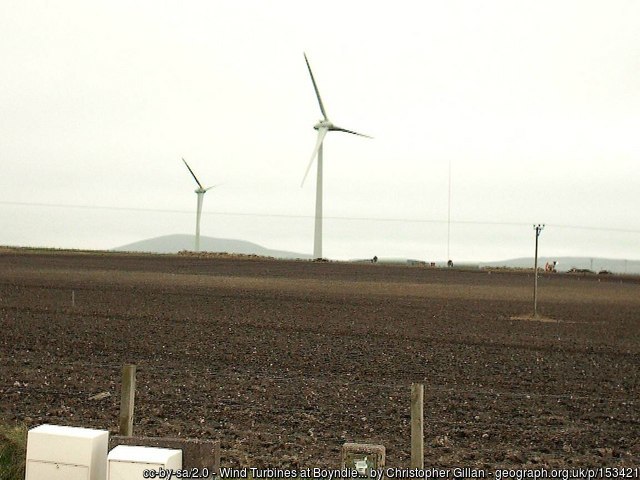Banff (Boyndie)
Did you know?
"Sir Max Aitken, son of Press magnate and wartime Minister of Aircraft Production Lord Beaverbrook and leader of the famed Banff Strike Wing, returned to his base many years later to formally reopen the Banff Flying Club and airfield on 2 June 1976.
"| Also known as: | Boyndie Industrial Estate / Boyndie Wind Farm / RAF Banff / RAF Station, Banff |
| County: | Aberdeenshire |
| Current Status: | Aviation / Farmland / Industry / Leisure activity / Wind farm |
| Date: | 21 April 1943 - 1982; subsequent minor use |
| Current Use: | Disused |
| Used By: | RAF / RAF (Norwegian) / Civil (minor use) / RCAF / RNZAF |
| Landing Surface Types: | Paved |
| Prominent People: | Max Aitken |
| Aircraft Roles: | Air-sea rescue / Anti-shipping (main role) / General aviation (minor use) / Trainer (main role) |
Banff, known locally as Boyndie, was built as a Coastal Command airfield in 1942 after initial approval was given in 1941. However, the site officially opened on 21 April 1943 under the control of No 21 Group of Flying Training Command. No 14 (Pilots) Advanced Flying Unit moved in shortly after with three Beam Approach Training Flights being linked with this element and also flying Airspeed Oxfords. Over 1500 pilots were trained by No 14 (P) AFU across just over a year at Banff until disbandment at the start of September 1944, using Fraserburgh and Dallachy as satellites.
Immediately after the (P) AFU left the airfield became home to operational units of the RAF Banff Strike Wing of Coastal Command. The first two units were Nos 144 and 404 Squadrons, shortly followed by more, operating de Havilland Mosquitoes and some Bristol Beaufighters, before the latter types moved to Dallachy. These units carried out anti-shipping missions from September 1944, later proving extremely successful against U-boats. With the Luftwaffe providing extra defensive cover over Scandinavia, the Strike Wing needed to operate with North American Mustangs from Peterhead acting as escorts. After the final sortie was flown in May 1945, the Mosquito squadrons either departed or disbanded, with No 14 Squadron (formerly No 143) finally moving to Gatwick near the end of August.
Banff eventually closed during 1946 and the land was returned to agricultural use. The airfield did however become a simulated bombing range from 1947 for Fleet Air Arm aircraft at Lossiemouth, with circles painted as targets on the landing area. Flying had not ended at the site though and in 1976 the airfield became home to the newly formed Banff Flying Club. The club did not survive the fuel crisis of 1979, however, some civil flying continued into the early 1980s.
Banff was equipped with three runways, plus a similar number of T2 and thirteen Blister hangars. The hangars have now been removed but the control tower and a number of other buildings, as well as most of the runways, perimeter track and hardstandings all survive. Part of the airfield has been used again by civil aircraft on a very limited basis, a small grass strip alongside one of the original runways. The rest of the site is now used for go-karting, industry and the Boyndie wind farm. The RAF Banff Trust is a charitable society established to preserve the heritage of the airfield, very much keeping the memory of this important place alive.
The following organisations are either based at, use and/or have at least potentially significant connections with the airfield (as at 31/08/2017):
- Aberdeen and District Motor Club
- Addison Graphics
- Banff & Macduff Community Council - name only
- Banff Cemetery - RAF graves
- Banff Library
- Boyndie Trust - Boyndie Visitor Centre
- Boyndie Wind Farm Co-operative Ltd
- Grampian Kart Club
- Hamlyns of Scotland Limited
- Motive Offshore Group Ltd
- Puffin Pellets
- RAF Banff Association
- Seafield Estates
- Whitehills & District Community Council
Main unit(s) present:
- No 14 (P) AFU
- No 14 Sqn
- No 65 Sqn
- No 143 Sqn
- No 144 Sqn
- No 235 Sqn
- No 248 Sqn
- No 279 Sqn
- No 281 Sqn
- No 333 Sqn
- No 334 Sqn
- No 404 Sqn
- No 489 Sqn
- No 1512 BAT Flight
- No 2749 Sqn RAF Regiment
- No 2848 Sqn RAF Regiment
- Aberdeen UAS
- Banff Flying Club
- Station Flight, Banff
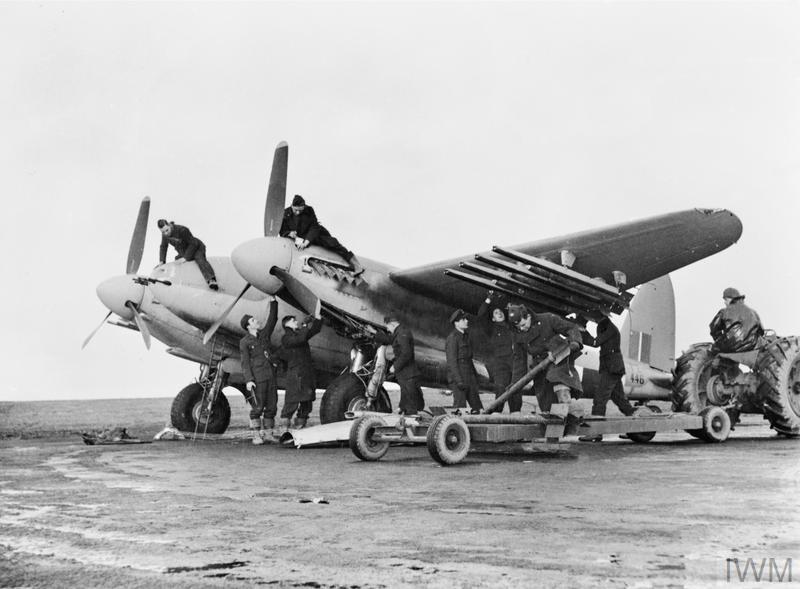
A de Havilland Mosquito of No 143 Squadron, being serviced and re-armed with 60-lb rocket projectiles at Banff during the Second World War. © IWM (HU 1626)
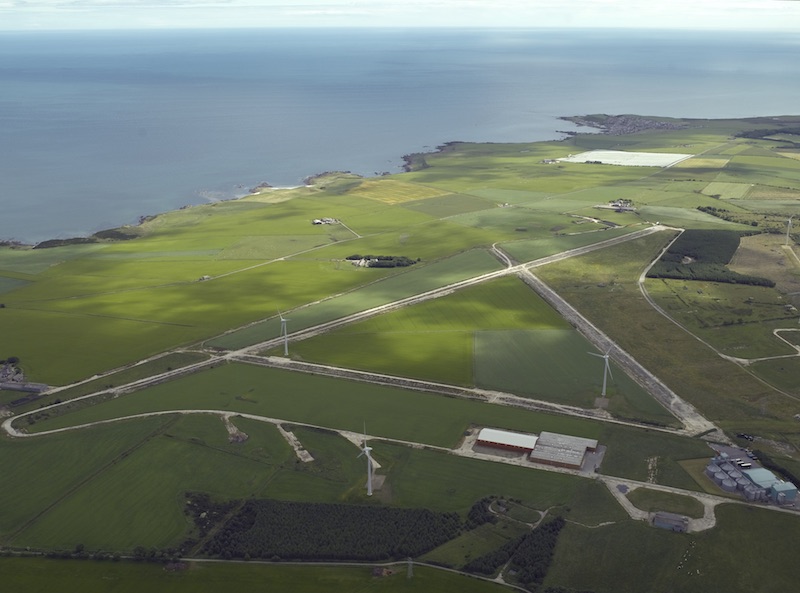
Aerial view centred on the remains of the airfield and the wind farm, taken from the west-south-west, 7 July 2006. © Crown Copyright: HES. Licensor canmore.org.uk
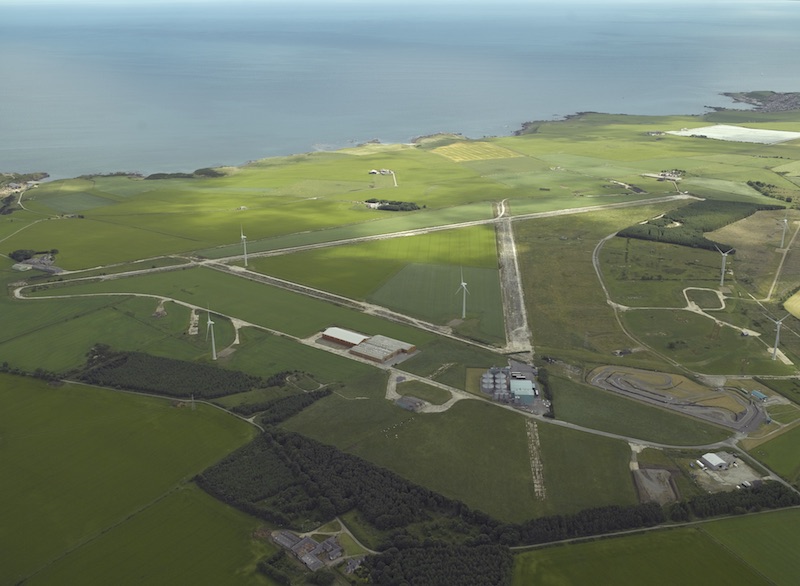
Aerial view centred on the remains of the airfield and the wind farm, taken from the south-west, 7 July 2006. © Crown Copyright: HES. Licensor canmore.org.uk
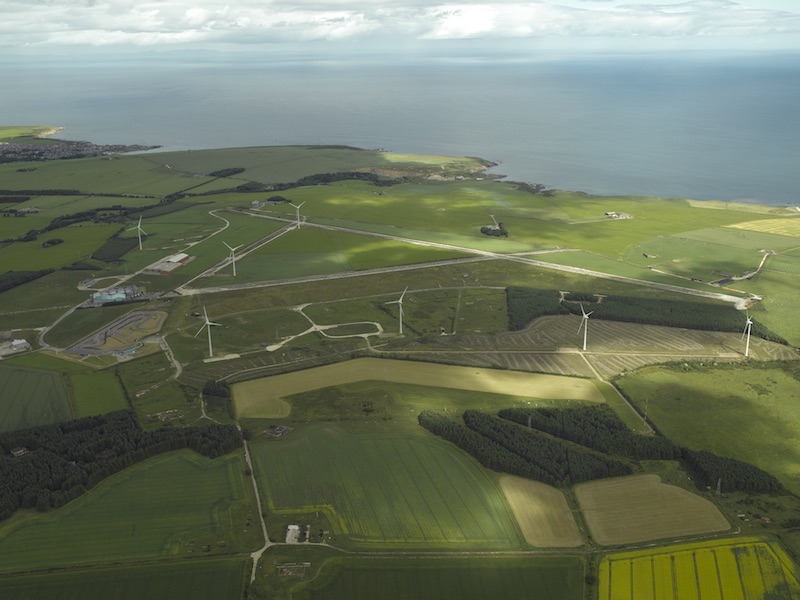
Aerial view centred on the remains of the airfield and the wind farm, taken from the south-east, 7 July 2006. © Crown Copyright: HES. Licensor canmore.org.uk
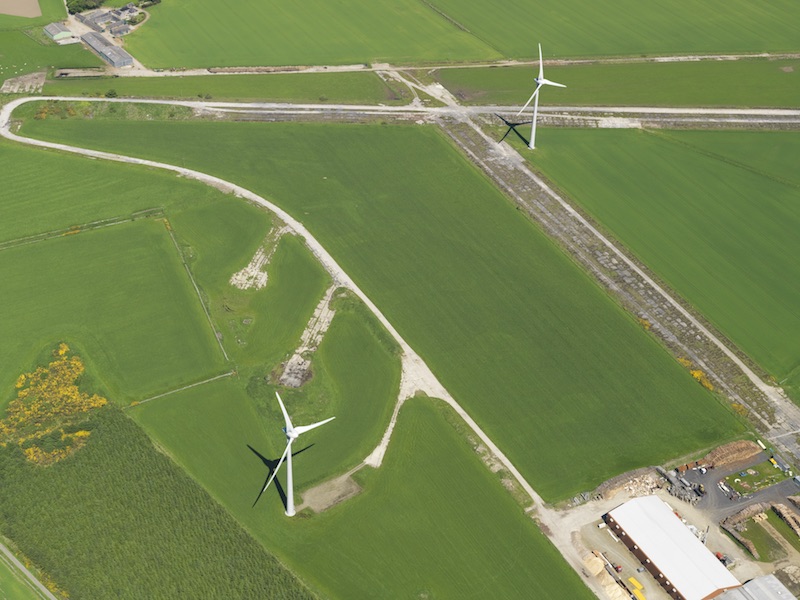
Aerial view showing part of the airfield, taken from the south-south-west, 30 May 2009. © Crown Copyright: HES. Licensor canmore.org.uk
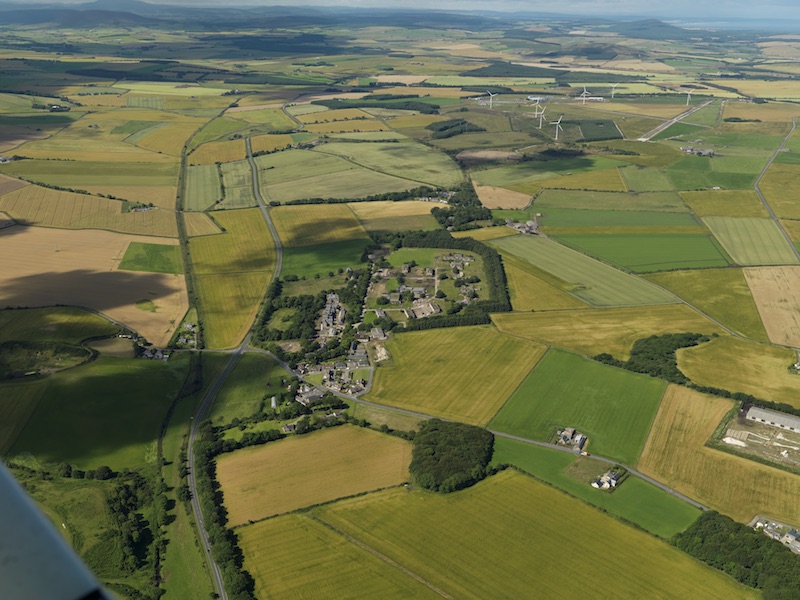
Aerial view centred on the hospital, taken from the east-north-east, 25 July 2009. © Crown Copyright: HES. Licensor canmore.org.uk
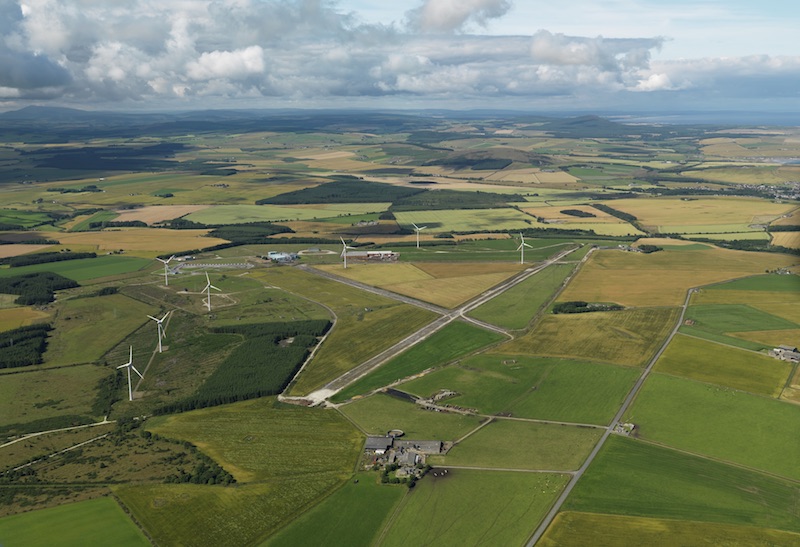
Aerial view centred on the remains of the airfield with the wind farm adjacent, taken from the east, 25 July 2009. © Crown Copyright: HES. Licensor canmore.org.uk
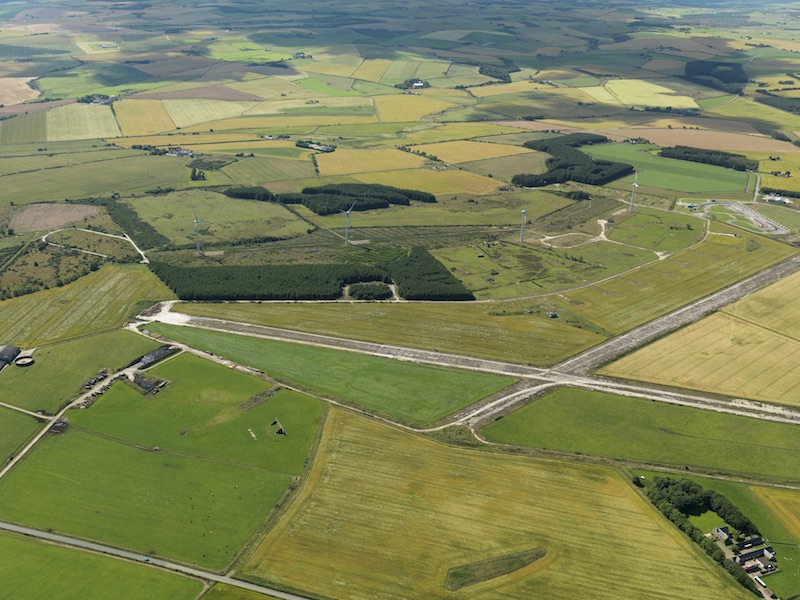
Aerial view centred on the remains of the airfield with the wind farm adjacent, taken from the north, 25 July 2009. © Crown Copyright: HES. Licensor canmore.org.uk
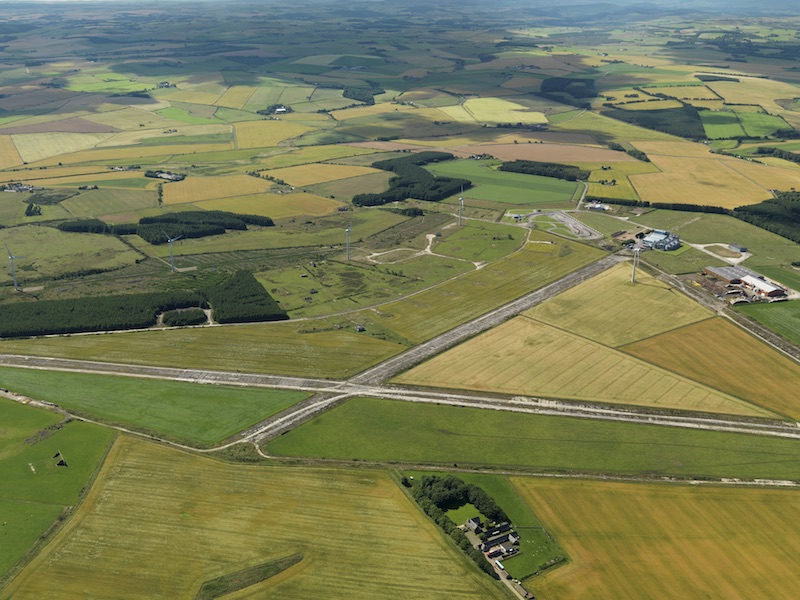
Aerial view centred on the remains of the airfield with the wind farm adjacent, taken from the north, 25 July 2009. © Crown Copyright: HES. Licensor canmore.org.uk
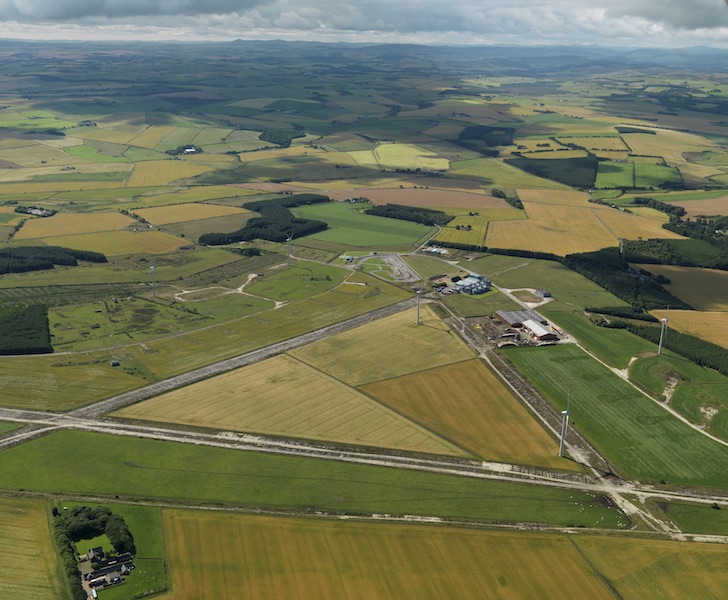
Aerial view centred on the remains of the airfield with the wind farm adjacent, taken from the north, 25 July 2009. © Crown Copyright: HES. Licensor canmore.org.uk
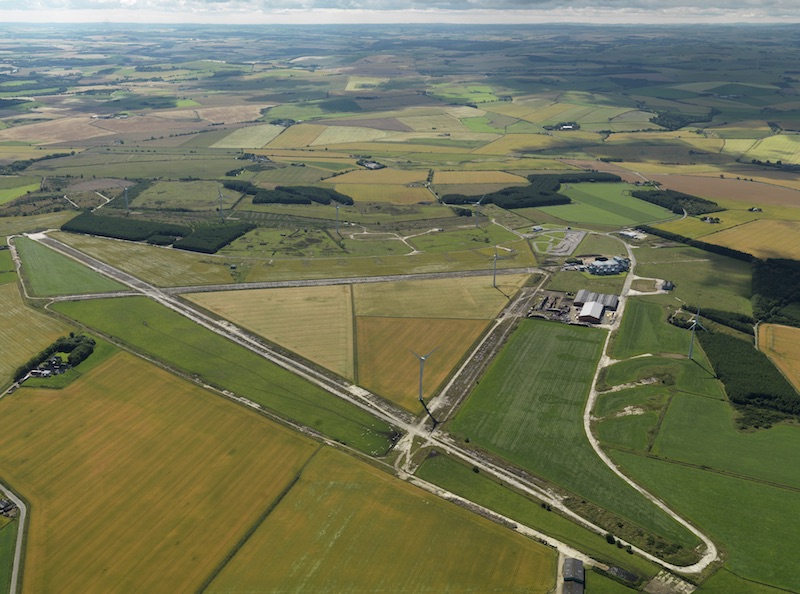
Aerial view centred on the remains of the airfield with the wind farm adjacent, taken from the north-west, 25 July 2009. © Crown Copyright: HES. Licensor canmore.org.uk
De Havilland Mosquitos at Banff, 1945. Courtesy of AIRBOYD
The opening of Banff Flying Club, 1976. Courtesy of gavtron75
Karting at Banff, 1995. Courtesy of D Lo
Drone footage of the airfield, c. 2015. Courtesy of John Milne
Footage of Banff Airfield, 2017. Courtesy of Colin Jeffrey
Aerial view of Banff. Courtesy of Moray Coast
| Relief Landing Ground(s): |
